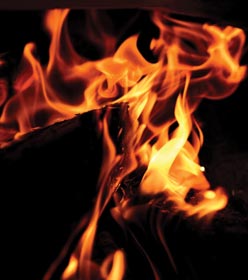

Wireless-based fire and security has been around for some years and like many technologies, there were some issues at the very early stages of development and deployment.
The rules that apply to technological development and the exponential rate that it advances illustrate that the 21st century will be equivalent to around 20 000 years of previous progress and advancement.
Wireless based technology is now all around us. Who could imagine a world without mobile telephones and WiFi. The security industry has already widely embraced the power and flexibility of wireless.
Myth: Wireless fire systems don’t comply with the standards
It is now generally accepted that wireless fire technology provides exactly the same levels of operation and protection as an equivalent wired system, with many of the myths being dispelled over recent years. Compliance with the European Standard EN54-25 ensures that manufacturers of wireless systems meet, and in most cases exceed, the demanding benchmarks of this standard.
Myth: Wireless fire systems will interfere with WiFi and other wireless systems
There are, however, still a few misconceptions surrounding wireless fire systems that need to be addressed and finally laid to rest. Issues such as reliability of the signal and interference are often at the top of the list, but a fully EN54-25 compliant system has to provide signal overhead levels to compensate for any attenuation or blocking and a survey before any installation will check for any possible interference. With a choice of channels to use within the agreed ICASA 868MHz frequency, and this built-in overhead, signal loss or unreliability is just not an issue.
Some people ask about WiFi interference, but with ICASA specifying and regulating radio frequencies used, there is absolutely no clash as the frequencies used for WiFi and wireless fire systems are unrelated.
Myth: Wireless systems are slower than wired
As with all fire systems, this depends on the panel used and in the case of a wired system, the length of the loop cabling and how far the signal has to travel. With wireless systems, this generally happens much faster. Third-party approvals also ensure that regardless of cable or not, systems operate within the time constraints dictated within the standards.
Myth: Wireless technology is more expensive to fit because it is harder to install
What could be easier to install than a detector, call point or sounder that only needs two screws and no cable? It is unlikely that this would take more than 10 minutes even for a novice installer. Minimal Health and Safety issues, reduced time spent working at heights and less disruption are some of the additional benefits as is the overall project timescale. Wireless systems can be programmed and tested off-site before any installation works commence, thus reducing on-site timescales with the added benefit of greatly reduced inconvenience and disruption to the customer’s business.
Myth: Wireless fire systems are too expensive
What about the overall cost of a system and the ongoing cost of ownership including maintenance? It is generally accepted that wireless equipment is more expensive, but then it does include sophisticated wireless technology. However, the much reduced installation time brings the overall cost, per point, down to a very comparable price, which in turn makes the overall cost of a system, including installation, almost indistinguishable. There are always variables, but in most circumstances there is very little in it.
Ongoing costs are often a talking point, but with routine maintenance being the same, wireless or wired, the only other factor would be the additional cost of batteries. With the advances in battery life and wireless technology these now last typically up to 5-7 years (EN54-25 states that this should be three years as a minimum) and with many systems using industry standard alkaline batteries, costs are minimal.
Compare this with wired installations which require essential wiring inspections and testing, as directed in the IEE Regulations (BS7671:2008), and the discussion about overall cost can become a short one.
Wireless technology has now been embraced across many applications and in fire we see many more systems being installed. This is not because of the more traditional reasons, such as historic properties or difficult installations, but simply because it’s easier and quicker and maintains business continuity. Couple this with the fact that many more of the 'wired' manufacturers are looking at a wireless or hybrid infrastructure as part of their overall solution, and it is safe to say that wireless fire is now no longer a niche product.
For more information contact Ryan Lawrence, G2 Security, +27 (0)87 940 9322, [email protected], www.g2security.co.za
| Tel: | +27 87 152 0680 |
| Email: | [email protected] |
| www: | www.g2fire.co.za |
| Articles: | More information and articles about G2 Fire |
© Technews Publishing (Pty) Ltd. | All Rights Reserved.